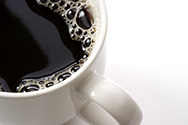New PAC study examines environmental impact of single-serve versus traditional brewed coffee

Although single-serve coffee has soared in popularity in recent years, the brewing method has also earned a bad rep for the amount of packaging waste it generates. New research from PAC, Packaging Consortium, however, reveals single-serve might be the greener choice.
The new study, Life Cycle Assessment of Coffee Consumption: Comparison of Single-Serve Coffee and Bulk Coffee Brewing, examined the "full-range" of environmental impacts of growing coffee, transporting it, processing it as well as its use and disposal by consumers. Surprisingly, the study, conducted by Quantis Canada, revealed that wasted coffee and electricity consumption during brewing and heating, rather than packaging, are the key parameters in the comparison between single-serve coffee and brewed bulk coffee.
The research found three benefits of single-serve coffee over traditional brewed coffee:
- · Single-serve coffee uses an exact serving of fresh coffee in a controlled process-leading to minimal coffee waste;
- · Drip-brewed coffee is consumer controlled and consumers are more likely to prepare more coffee than they need with leftovers going down the sink; and
- · Bulk brewing systems typically use a hot plate to keep coffee warm and can use more energy than single-serve systems.
"We understand that people are concerned about the environmental impacts of single-serve packaging," said PAC CEO James D. Downham, in a release. "So, we wanted to support a transparent, credible study that would assess the big picture environmentally, including the impacts on the staggering global issues of food loss and waste because every time someone empties a coffee pot down the drain, the water, energy and resources used from the farm all the way to that home are going down the drain too."
Read more about PAC’s study here
Read more Products and Packaging articles on sustainability
